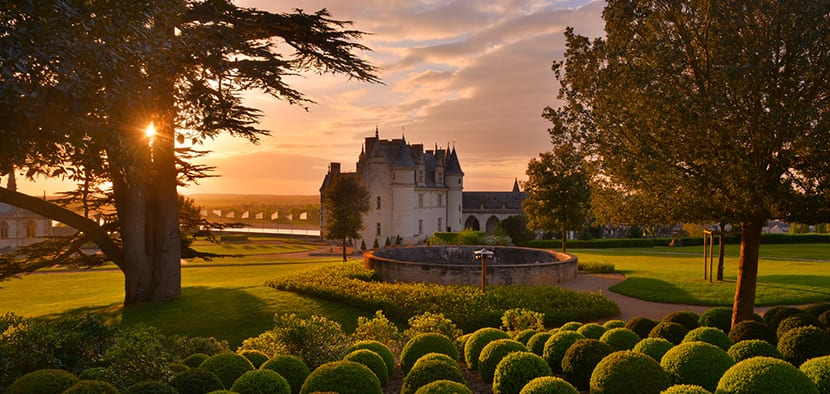
If you are going to be in Paris for a few days you can always sign up for a tour of the castles of the Loire. By no means will you know all of them, they are quite a few, but if you want to indulge yourself, the excursions leave early in the morning and return around 8 at night. And even if you don't like tours, let me tell you, they are worth it.
The castles are beautiful, each one has its history and if you are attracted to the Middle Ages, the Renaissance or the history of France in general, which goes through each of these centuries-old buildings, you should know them.
The Loire Valley and its castles
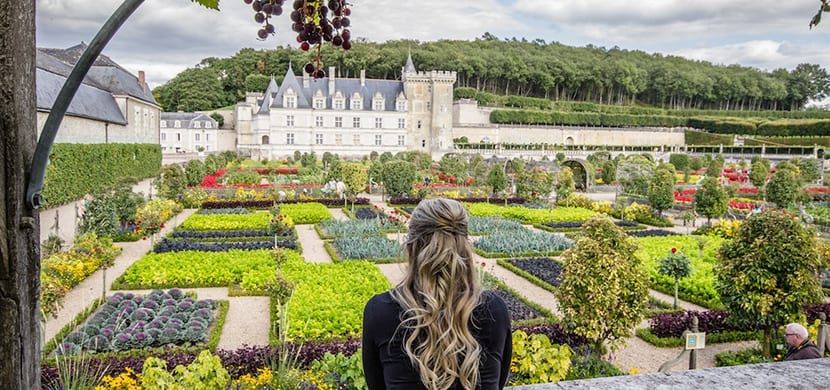
The valley covers about 280 kilometers and is towards the center of France. Will be about 800 square kilometers and it is a green region, of vineyards, fruit gardens, streams and historic towns. Originally there were many more castles in the valley but today there are about 300. Fire, destruction in the French Revolution or simply time and oblivion have wiped out many of them.
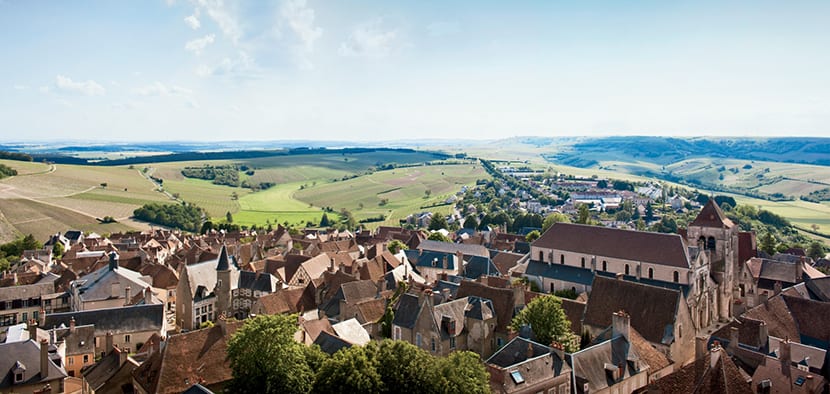
Personally, I think the best way to get to know the area is to rent a car and spend a few days traveling and enjoying yourself. It is not what tourists usually have so almost always there is no other than sign up for a tour. When I did it, a few years ago, I paid just over 100 euros. We were just seven people, four Spanish-speaking, one Italian and one English, who left in a minivan at 7:30 am heading for the valley.
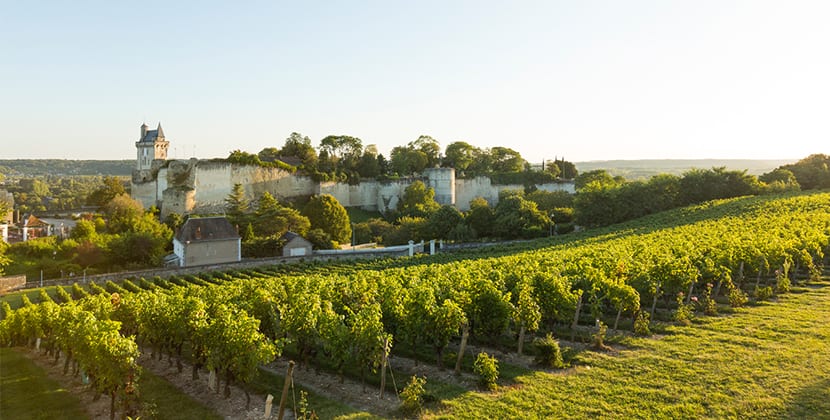
In my case we got to know the castles that I am going to talk about today: Chenonceau, Chambord and Cheverny, but of course there are many others that remained in the pipeline and are highly recommended and popular.
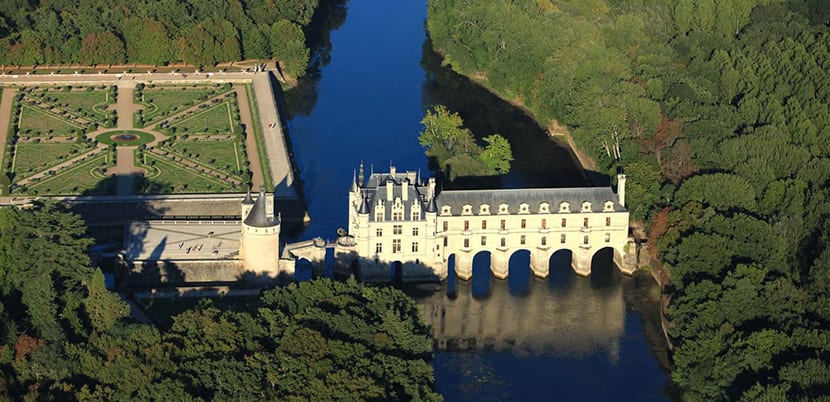
El Château de Chenonceau is known as the castle of the ladies and for me it is the most beautiful and one of those that allows you a greater immersion in the life of yesteryear. Because of how it is furnished, heated ... Originally there was a small fortress here that was replaced in the XNUMXth century by a Renaissance castle that was expanded to its current size throughout the same century.
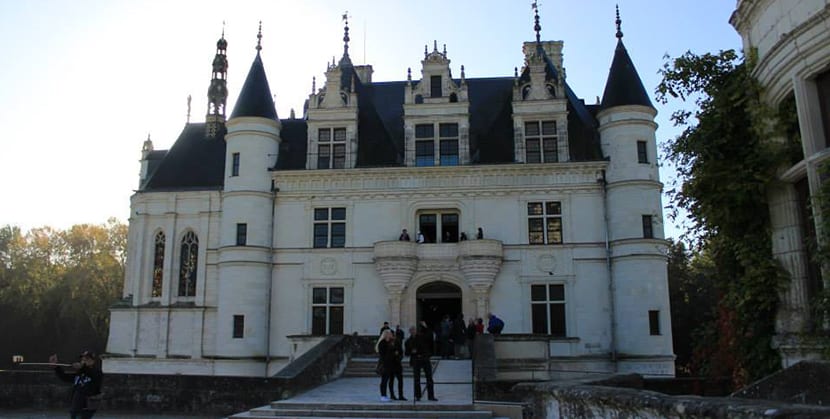
It is known as a castle of women because the first lady who inhabited it was Catherine Briconnet, since her husband, the builder, spent it in the war. Later they sold it to the crown to pay debts and then the monarchs began to use it for hunting days or parties. Henri II gave it to his lover, Diana of Poitiers and she was the one who added the bridge, as well as the gardens.
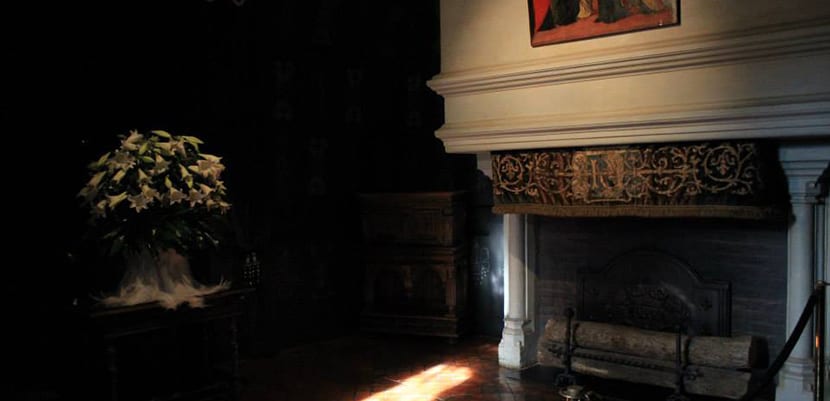
At the death of the king the queen, Catherine de MediciHe cast her out and once there he built the long and elegant gallery that today characterizes the castle, and the ballroom. It is a beautiful castle surrounded by green and as the minivan or the car parks about one hundred or one hundred and fifty meters away, you walk closer and the views are great.
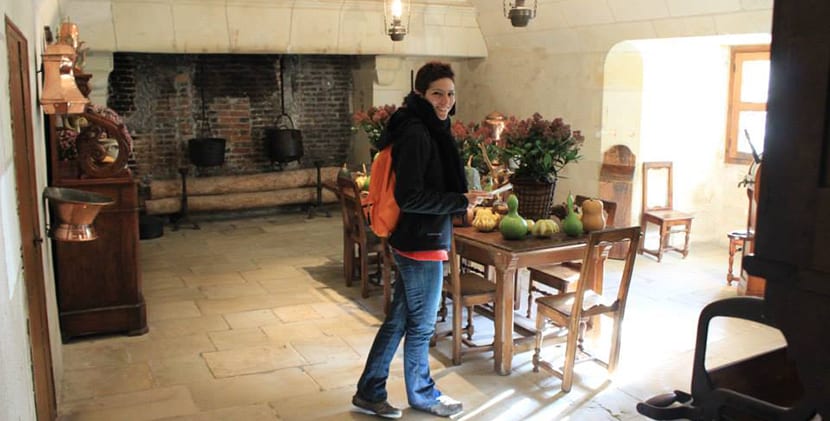
When I went, in October, the fireplace in the reception was lit and one could come over to warm one's hands. There was the scent of fresh flowers that came from huge vases distributed here and there in the halls and it seemed like a house more than a castle. Inside there are Renaissance-style furniture, many paintings and tapestries and in the private rooms of the castle works by Rubens, Nattier or Le Primatice.

It has a chapel lovely whose colorful stained glass windows were destroyed by WWII bombs, although there are replacements today. I did not have the opportunity to enter because it was closed for repairs but that was momentary. The free walk inside the castle takes you to the kitchens, on the lower levels, beautiful, with all its copper kitchenware hanging on the walls and on shelves, and with tiny windows that look out over the bridge and the river, just to bring the fish directly from the water to the kitchen.
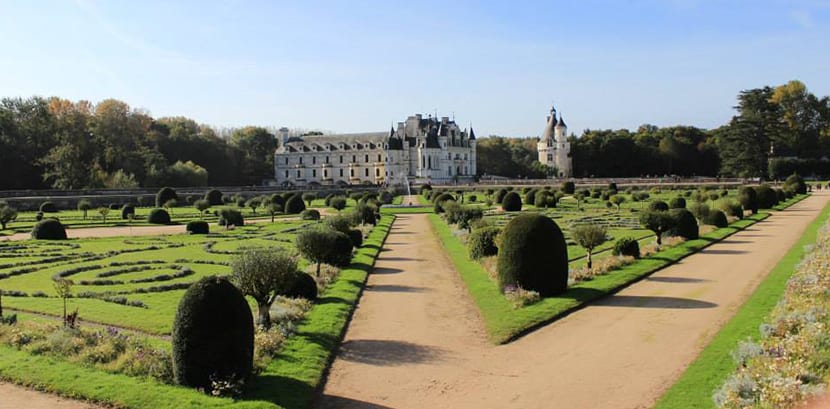
La 60 meter long gallery It is another of its wonders, with black and white floors that served as a ballroom. Can you imagine the ladies and gentlemen dancing under the candlelight? The door at the other end is usually closed, although they open it in high tourist season. I was not that lucky.
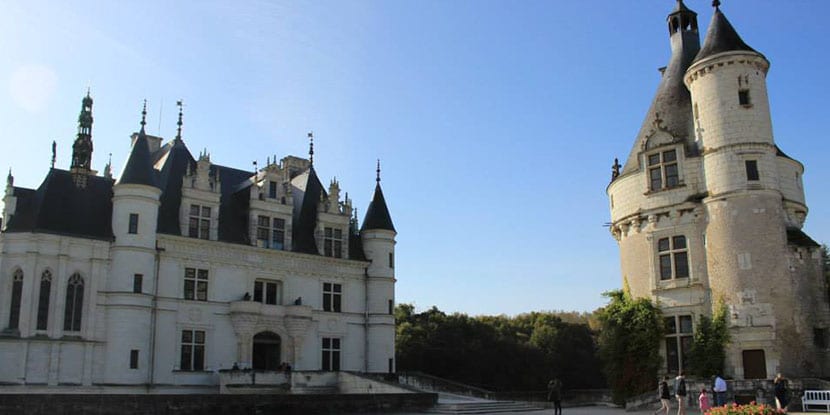
Finally the gardens they are a separate walk. Catherine de Medici's has a central pond and Diane de Poitiers's has a beautiful fountain. On Friday, Saturday and Sunday in June at night they are illuminated, the same every night in July and August from 9:30 pm.
To rest a while there is the Le Orangerie coffee shop, in the old stables, where the people who hired the tour with lunch included sit down to eat. Is it convenient? No, there is a kiosk for a snack and you have more time to wander. Admission this 2018 costs 14 euros or 18 with audio guide.
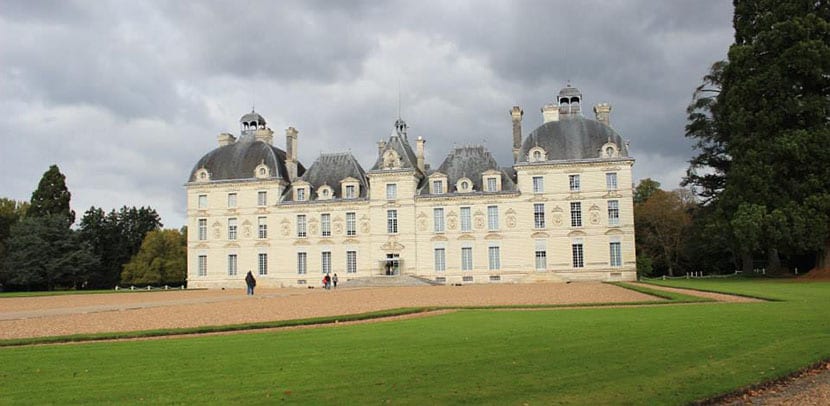
The next castle I met on that tour was the Cheverny Castle. It is actually a mansion more than a castle and I don't understand why they included it in the tour when there are so many beautiful medieval castles. But hey, it is a Renaissance-style castle that has been in the hands of the same family for six centuries, the Huraults.
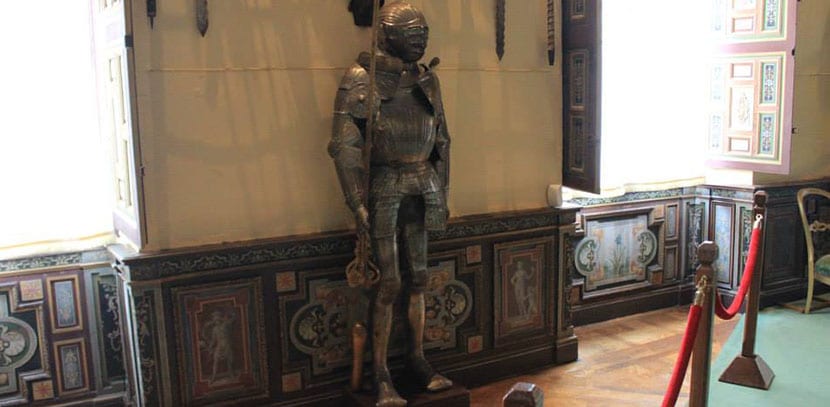
Cheverny was built between 1604 and 1635, according to the source, and has a classic Louis XIII style, very, very symmetrical. Today it is partially open because there is a part that the family continues to use when they go to the fields. The visit is by a signposted path that takes you from one room to another furnished room. The first is a spacious room decorated with weapons, armor, swords, and beautiful tapestries.
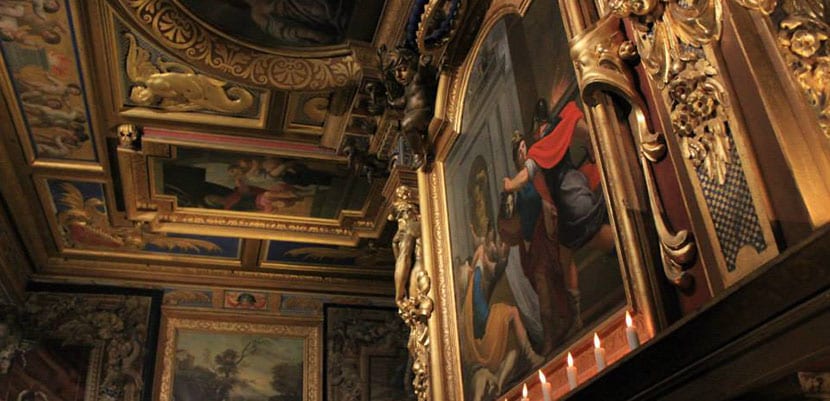
You also pass through a dining room with wood paneling that tells the story of Don Quixote, with a beautiful fireplace, you pass through a bedroom, a beautiful tea room with the table set and on the upper floor is the private chapel of the castle.

Around there are greens grounds that in the war they knew how to keep some of the treasures of the Louvre, and you can walk until the guide of your tour calls you to go to the next castle.
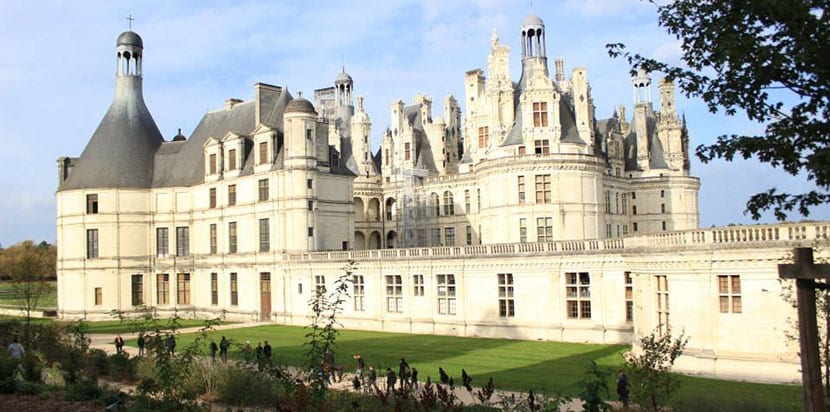
In my case it was Chambord castle. The most famous of all? Yes, because of how impressive it is. It was built by a flamboyant king, Francis I, at the beginning of the XNUMXth century as a sumptuous hunting ground. It has 400 rooms, 365 homes and 84 stairs. He only lived here for two months under his reign and today it is regrettable that he does not have a single piece of furniture, or almost, inside.
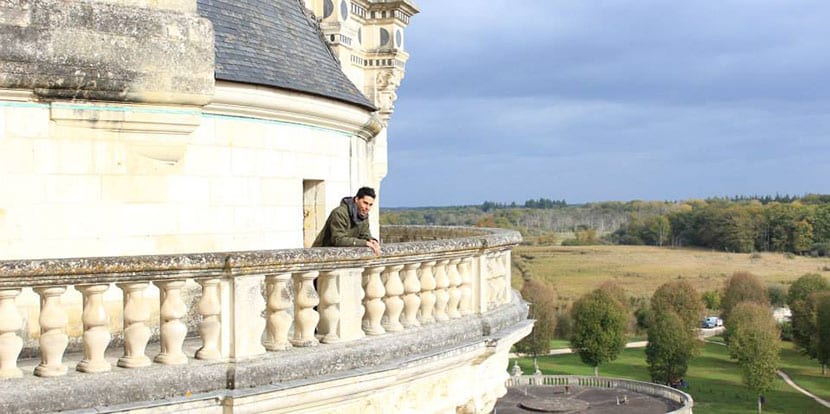
Chambord is an empty shell but all open to you discovering it, going up and down, you go into empty rooms, knock on neglected wooden doors, climb on the ceilings and contemplate the landscape. In fact, if you go on your own, you can walk or bike through its vast gardens. I said there was hardly any furniture and so on, except for the bedroom of Francis I and Louis XIV which is dedicated to royal toys. Afterwards, there is not much else.

The pearl of Chambord is his spiral staircase said to have been designed by Leonardo Da Vinci. If you go with someone, one goes up one stairway and the other up the other and they will never touch. On the nights of July and August from 10 pm to midnight the facade of the castle is lit up with a light and sound show.
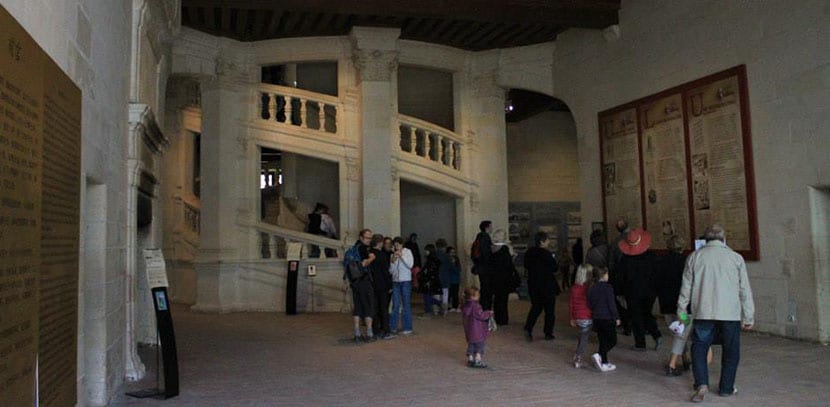
In addition, an American philanthropist, Schwarzman, recently donated the money to restore the gardens on the north facade and today they shine like they did in the XNUMXth century. And you can rent bikes to ride! Admission this 2018 costs 13 euros.
Others castles of the Loire? Villandry, the elegant Amboise Castle, Blois ,, Langeais or the solid Chaumont-sur-Loire.